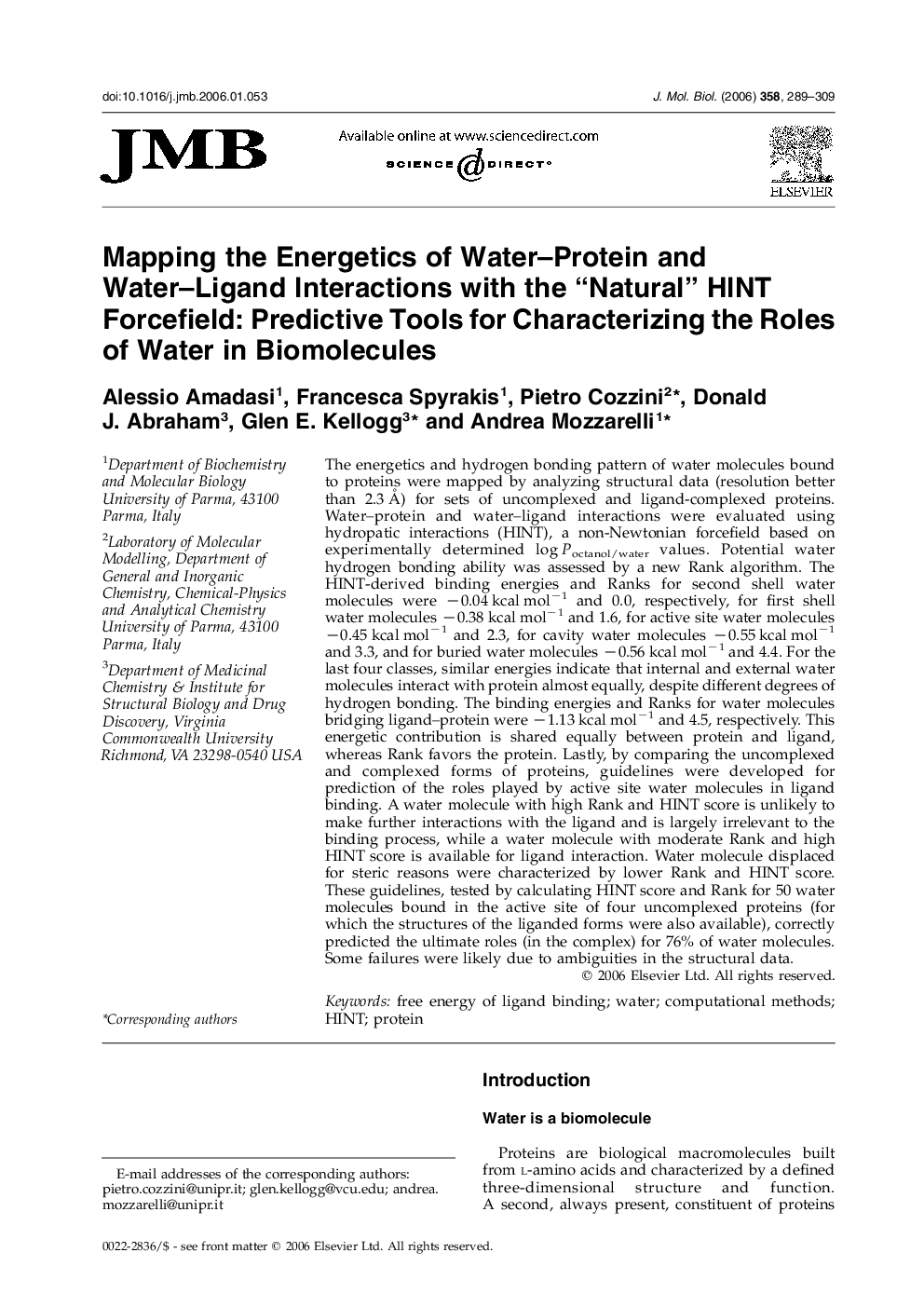| Article ID | Journal | Published Year | Pages | File Type |
|---|---|---|---|---|
| 2189805 | Journal of Molecular Biology | 2006 | 21 Pages |
The energetics and hydrogen bonding pattern of water molecules bound to proteins were mapped by analyzing structural data (resolution better than 2.3 Å) for sets of uncomplexed and ligand-complexed proteins. Water–protein and water–ligand interactions were evaluated using hydropatic interactions (HINT), a non-Newtonian forcefield based on experimentally determined log Poctanol/water values. Potential water hydrogen bonding ability was assessed by a new Rank algorithm. The HINT-derived binding energies and Ranks for second shell water molecules were −0.04 kcal mol−1 and 0.0, respectively, for first shell water molecules −0.38 kcal mol−1 and 1.6, for active site water molecules −0.45 kcal mol−1 and 2.3, for cavity water molecules −0.55 kcal mol−1 and 3.3, and for buried water molecules −0.56 kcal mol−1 and 4.4. For the last four classes, similar energies indicate that internal and external water molecules interact with protein almost equally, despite different degrees of hydrogen bonding. The binding energies and Ranks for water molecules bridging ligand–protein were −1.13 kcal mol−1 and 4.5, respectively. This energetic contribution is shared equally between protein and ligand, whereas Rank favors the protein. Lastly, by comparing the uncomplexed and complexed forms of proteins, guidelines were developed for prediction of the roles played by active site water molecules in ligand binding. A water molecule with high Rank and HINT score is unlikely to make further interactions with the ligand and is largely irrelevant to the binding process, while a water molecule with moderate Rank and high HINT score is available for ligand interaction. Water molecule displaced for steric reasons were characterized by lower Rank and HINT score. These guidelines, tested by calculating HINT score and Rank for 50 water molecules bound in the active site of four uncomplexed proteins (for which the structures of the liganded forms were also available), correctly predicted the ultimate roles (in the complex) for 76% of water molecules. Some failures were likely due to ambiguities in the structural data.
